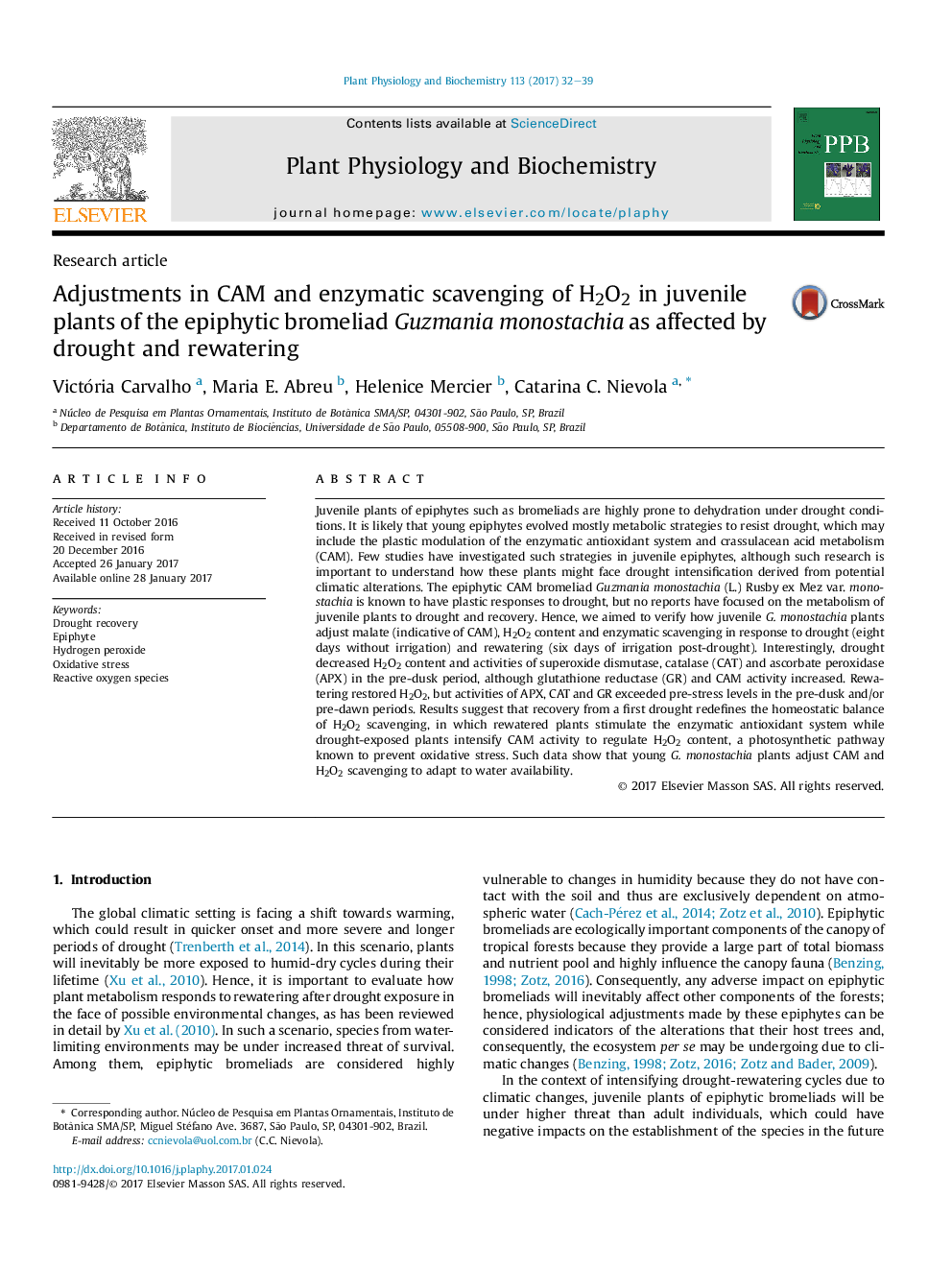| کد مقاله | کد نشریه | سال انتشار | مقاله انگلیسی | نسخه تمام متن |
|---|---|---|---|---|
| 5515593 | 1541908 | 2017 | 8 صفحه PDF | دانلود رایگان |

- Drought decreased H2O2 content and antioxidant enzyme activities in juvenile bromeliad plants.
- Rewatering juvenile bromeliad plants increased daytime H2O2 to a similar level of pre-stress conditions.
- Drought-exposed plants intensified CAM and GR activity to control H2O2 in the light period.
- Rewatering stimulated CAT, APX and GR to restore H2O2 to pre-stress levels.
Juvenile plants of epiphytes such as bromeliads are highly prone to dehydration under drought conditions. It is likely that young epiphytes evolved mostly metabolic strategies to resist drought, which may include the plastic modulation of the enzymatic antioxidant system and crassulacean acid metabolism (CAM). Few studies have investigated such strategies in juvenile epiphytes, although such research is important to understand how these plants might face drought intensification derived from potential climatic alterations. The epiphytic CAM bromeliad Guzmania monostachia (L.) Rusby ex Mez var. monostachia is known to have plastic responses to drought, but no reports have focused on the metabolism of juvenile plants to drought and recovery. Hence, we aimed to verify how juvenile G. monostachia plants adjust malate (indicative of CAM), H2O2 content and enzymatic scavenging in response to drought (eight days without irrigation) and rewatering (six days of irrigation post-drought). Interestingly, drought decreased H2O2 content and activities of superoxide dismutase, catalase (CAT) and ascorbate peroxidase (APX) in the pre-dusk period, although glutathione reductase (GR) and CAM activity increased. Rewatering restored H2O2, but activities of APX, CAT and GR exceeded pre-stress levels in the pre-dusk and/or pre-dawn periods. Results suggest that recovery from a first drought redefines the homeostatic balance of H2O2 scavenging, in which rewatered plants stimulate the enzymatic antioxidant system while drought-exposed plants intensify CAM activity to regulate H2O2 content, a photosynthetic pathway known to prevent oxidative stress. Such data show that young G. monostachia plants adjust CAM and H2O2 scavenging to adapt to water availability.
Journal: Plant Physiology and Biochemistry - Volume 113, April 2017, Pages 32-39